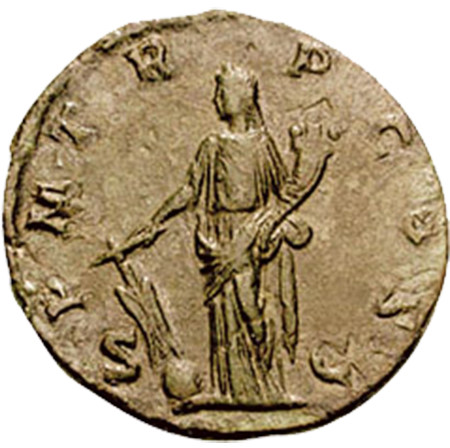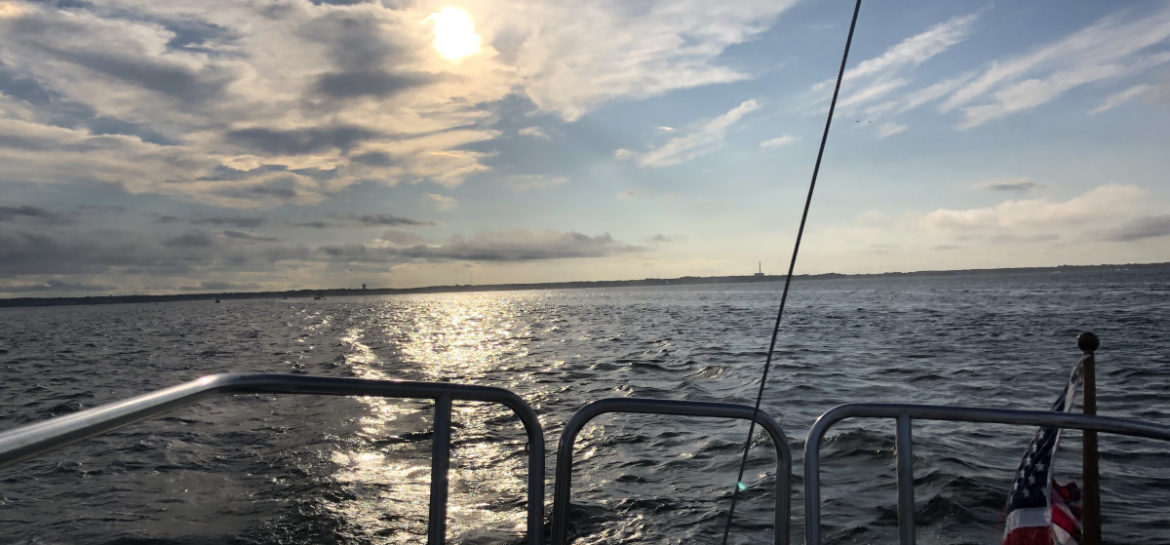
I don’t love the title, but I’ve been to Myers Hole a lot, and I have to keep coming up with new names. I probably learned the term “redux” (from the Latin verb reducere, meaning “to lead back”) when they released the extended cut of Apocalypse Now, but in ancient Rome, Fortuna Redux was also the form of the goddess of luck who helped travelers return from long and dangerous voyages. She was often depicted as carrying a cornucopia and a rudder, which is at least vaguely nautical.
Although Myers Hole may have been a sort of return for me, Jenn had never been there. She’d never even spent a night at anchor. I attempted to bring her up to speed in preparation: the perils of overnight anchoring in switching currents, anchor rode catenary and the diminishing effectiveness of a kellet with increased loading, the tenuous relationship between tidal current and the height of the tide, a failed non-visual explanation of the vector math involved in setting a course when sailing across a current, the limitations of energy and storage, running a narrow channel with drunken powerboaters kicking up 6ft wakes at close range…does this guy know how to party or what?
None of these things are required knowledge to enjoy a weekend on the boat. I didn’t know any of these things the first time I went to Myers Hole. It’s twelve miles away. It’s not like we were sailing to the Azores through a hurricane. I don’t know if I was trying to be a good skipper or if I’m sometimes just the personification of my own anxiety.
We arrived at the shore quite late, and it took us longer than normal to load in with all of the “staying on the boat” stuff. I also had to fill the water tank. I hadn’t even considered the water tank since 2017, and, oh my. I guess I was under the impression that nothing would grow in propylene glycol. In fact, I had incubated a horrifying creature that is probably only weeks away from crawling out of Tokyo Bay and picking a fight with Godzilla. A fight that people would be able to smell in Osaka. I tore the boat apart looking for the bleach that I was certain I had on board, but I couldn’t find it. The cabin was hot and I wanted to get to the channel before the tide turned (time and tide wait for no kaiju), so we sealed the tank and prayed that the botulism monster would continue its insidious slumber.
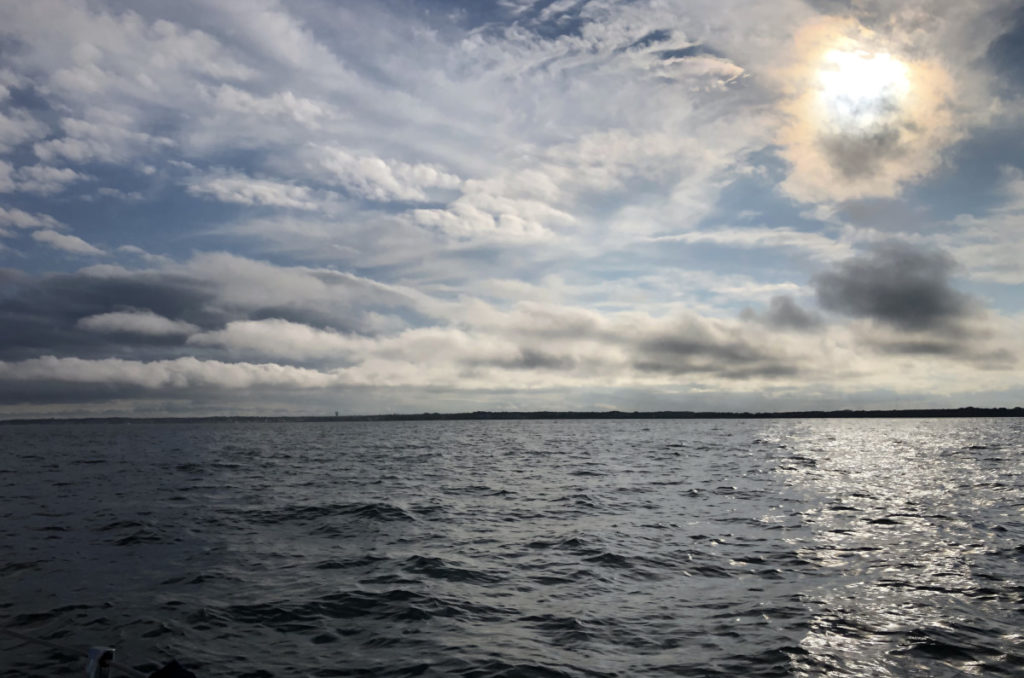
Despite all of the distractions, the sailing was magnificent. The wind was a steady 10kts from the southeast. The clouds to the west were a jumbled hodgepodge, but contained nothing ominous. There were surprisingly few boats out.
As we neared marker BI, we overtook a sailboat flying only a headsail. I assume their in-mast furling main must have been damaged, as they often are. Either that, or they’re the kind of folks who have never been in such a dang rush that they needed to go past “L” on their Buick’s automatic transmission. I passed them to leeward, so as to not block their wind. It was the gentlemanly thing to do. Although I did follow it up with furling the jib, jibing through 270° to starboard, and passing just behind their dinghy to enter the Oyster Creek Channel, since by then, they were creeping directly in front of the entrance. Perfect timing.
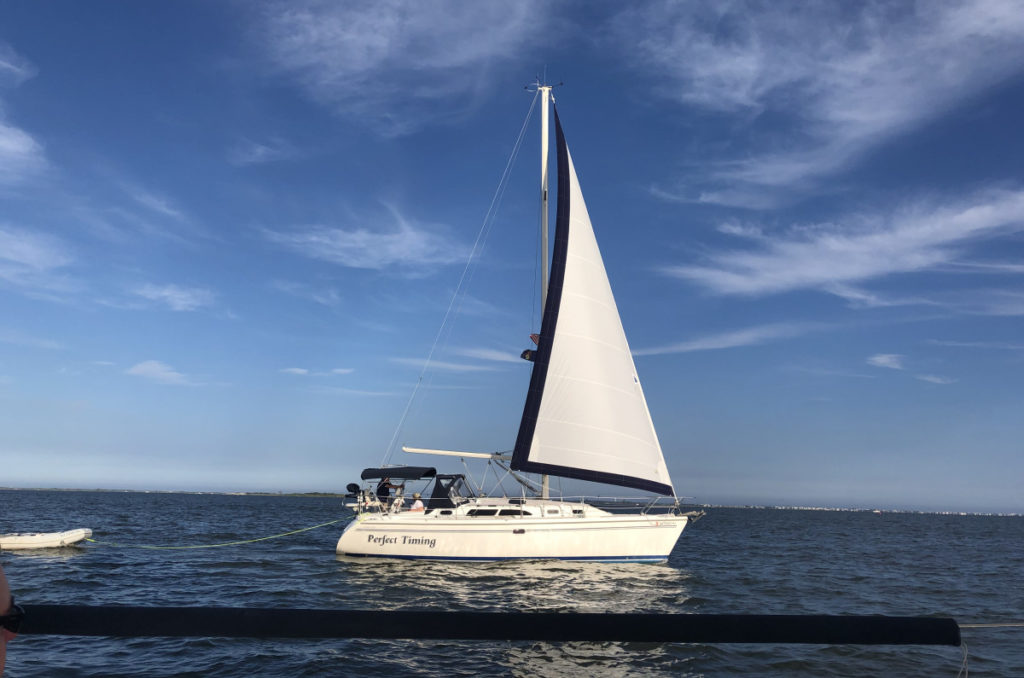
We were almost head-to-wind, so I started the engine and we began winding our way through the sedge islands.
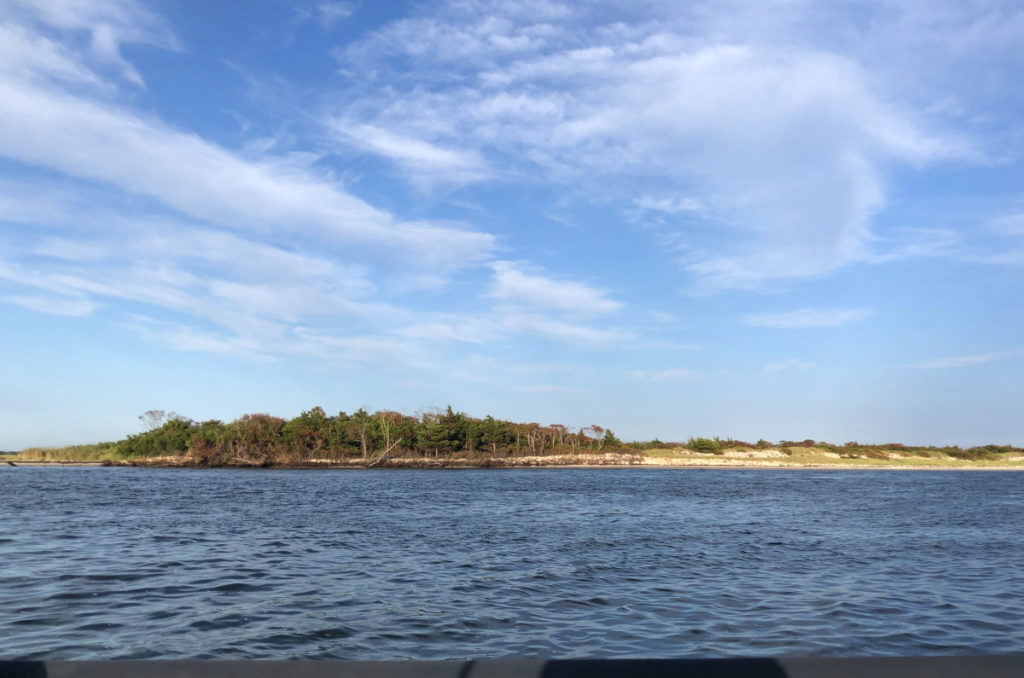
The current was running fairly briskly, but it was still ebbing, so it only nudged us along our way. Jenn kept me apprised of the powerboats racing around us on either side and scouted for the next sets of buoys. She quickly learned that sometimes a green can actually presents as a brown half-circle, when all of its paint has come off and it’s just a piece of rust being blown sideways by the current.
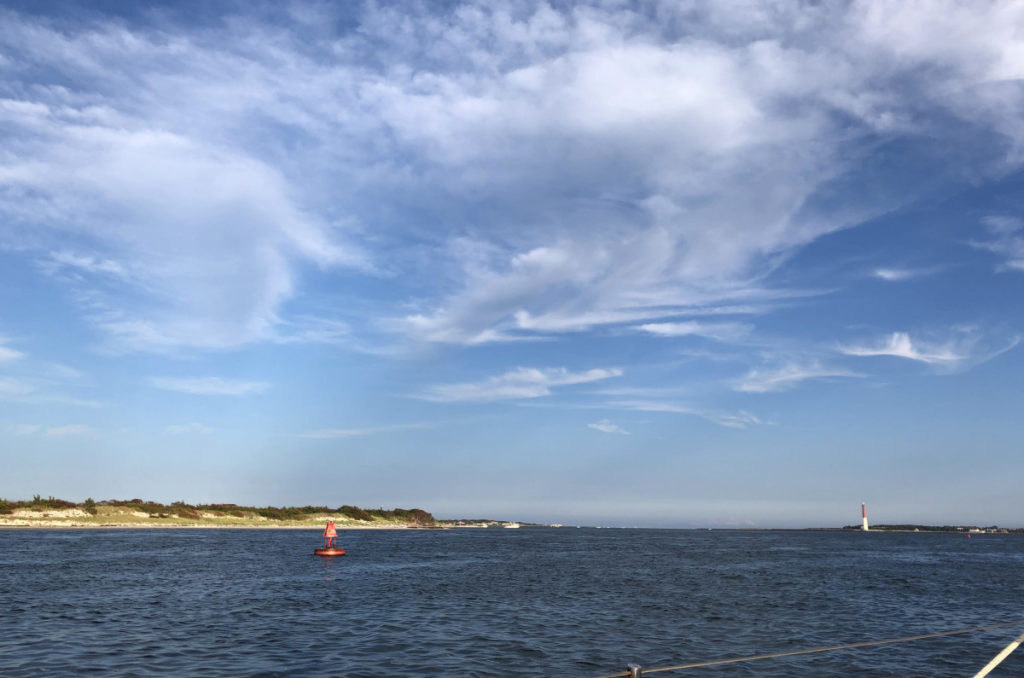
I got momentarily confused at the confluence of the Oyster Creek Channel and the Double Creek Channel, as I always do, but recovered before we got into the shallows. We came around the bend to where we could look straight down the inlet at the wide open ocean and see the full height of the lighthouse. It’s always a sight.
The Island Packet Hannah from my club was ahead of us, and they made the turn as if they were going to go out the inlet. When they got to the island, they went the other way though, taking the long way to the anchorage. I skimmed over the shallow spot and went there directly, then started surveying the area a bit to get a sense of where to anchor.
I turned the helm over to Jenn and we talked through the anchoring process one more time. The main was still up, but the wind was so light that I elected to leave it there, thinking that it either wouldn’t matter or could possibly act as a wind vane to keep us pointed correctly while backing away from the anchor. I went forward and started messing with the anchor rode. It was, of course, tangled, so I had Jenn wave off on the first approach and go around. They make it look so easy in naval movies when some officer just rattles off course and throttle changes and other people adjust the controls. In practice, I find it so much easier to just do it myself, especially when operating at very low speeds with minimal flow over the rudder, when things start to get squirrely and it’s more about reacting to the cards you’re dealt rather than sticking to a firm plan. But despite my incoherent direction, Jenn did great, and once I had the anchor untangled, we were able to drop it right where I wanted and back down on it.
We lowered the main and I rigged the kellet. I puttered around checking on things while Jenn unwound. Some pelicans flew over the boat. Apparently, this place is now lousy with pelicans.
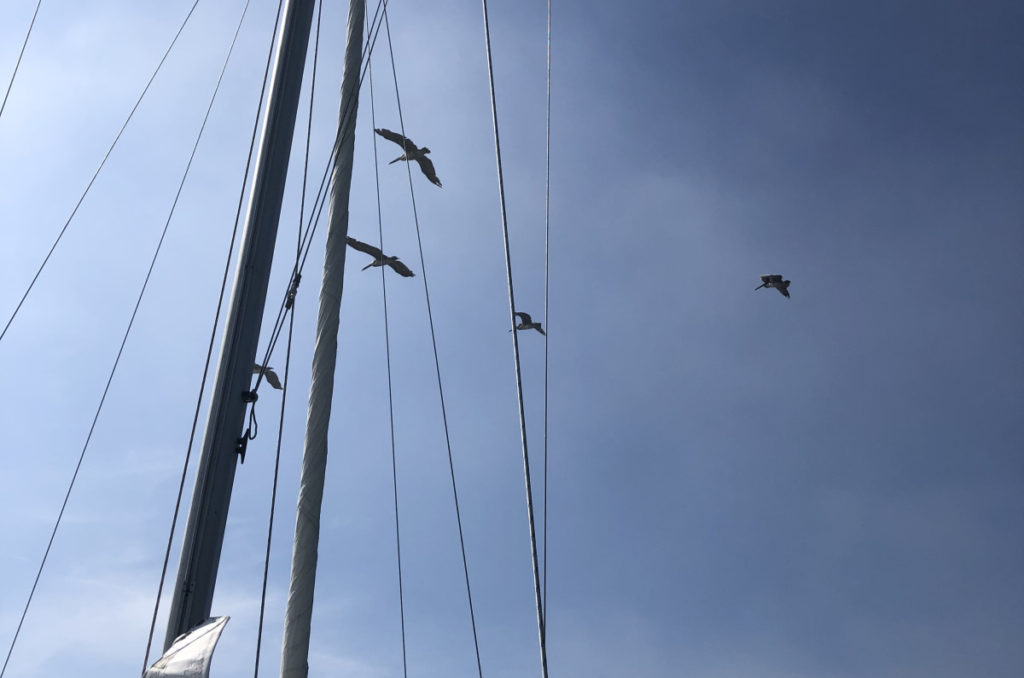
When it became clear to me that we were not dragging, the anchor light was working, and the head was functioning, I also started to unwind. We ate dinner and watched the sun set behind the spit of land to the west.
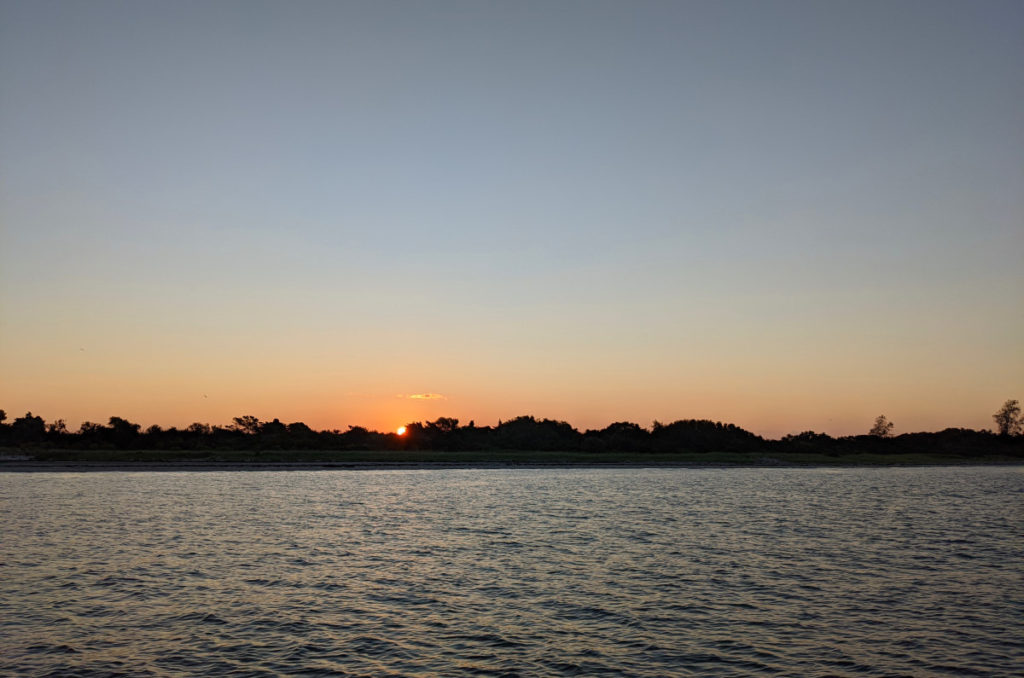
I couldn’t believe that there were only five boats in the anchorage, but I wasn’t complaining. It felt extremely spacious.
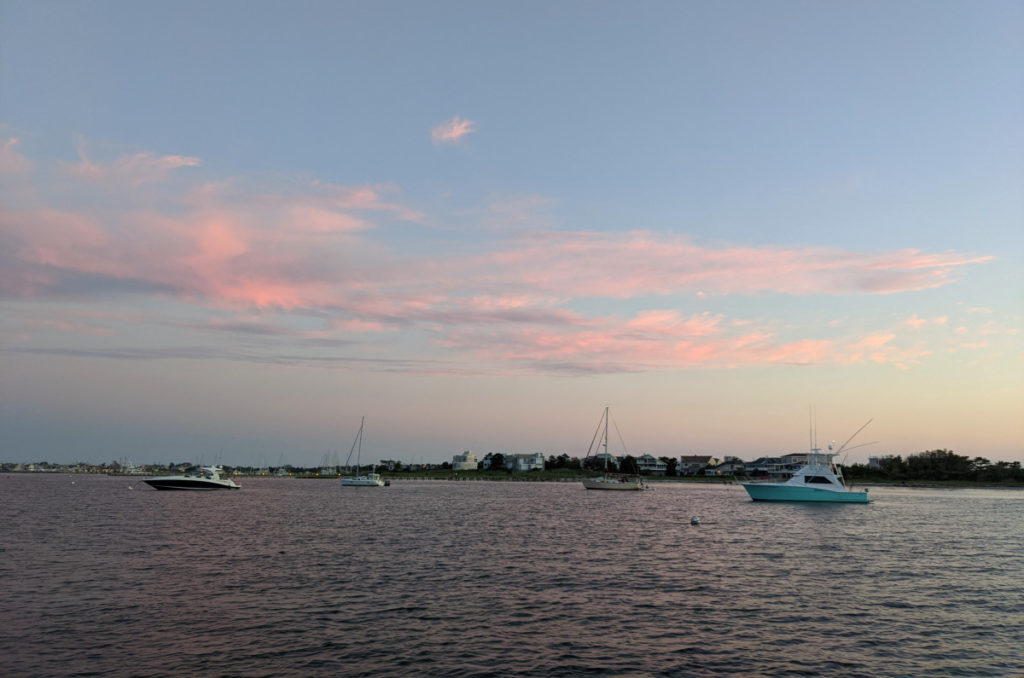
We sat outside as it got darker and watched the stars start to appear. Jupiter and Saturn were easily visible in the southern sky. They didn’t look that much better with my Li’l Peepers Junior Binoculars (no rings on Saturn, for example), although the binoculars did reveal that there are many more stars in the background that I usually can’t see. My sky map kept telling me that Pluto was right between the other two planets, but considering that Pluto wasn’t discovered until 1930, I’m pretty sure that I wasn’t going to find it with my optics. And yeah, I said “the other two planets.” I’m all about science, but Pluto will remain a planet for me until this thing growing in my water tank goes Super Saiyan and eats it.
We eventually converted the cabin to sleep mode and retired for the evening, but I basically didn’t sleep at all. It’s been a long time since I’ve been at anchor overnight, and Fortuitous felt like she was riding strangely…probably because the current was stronger than the wind, and what little ripples there were weren’t on our bow. It was muggy, and condensation would occasionally drip on me through the open hatch with maddening irregularity. I got up a few times and wandered around the boat, looking at the anchor line or resting in the cockpit. Around 3:00am, some powerboats in the shallow water near Island Beach were playing grab ass and shining spotlights around. No idea what that was all about, but they left abruptly via the inlet. I spent a lot of time trying to figure out the “night mode” on my telephone’s camera, but I think the boat motion is too much for it. The best photo I got was the following, and it’s not great, although it is unusual considering how dark it was in person (I did not add the vignette effect).
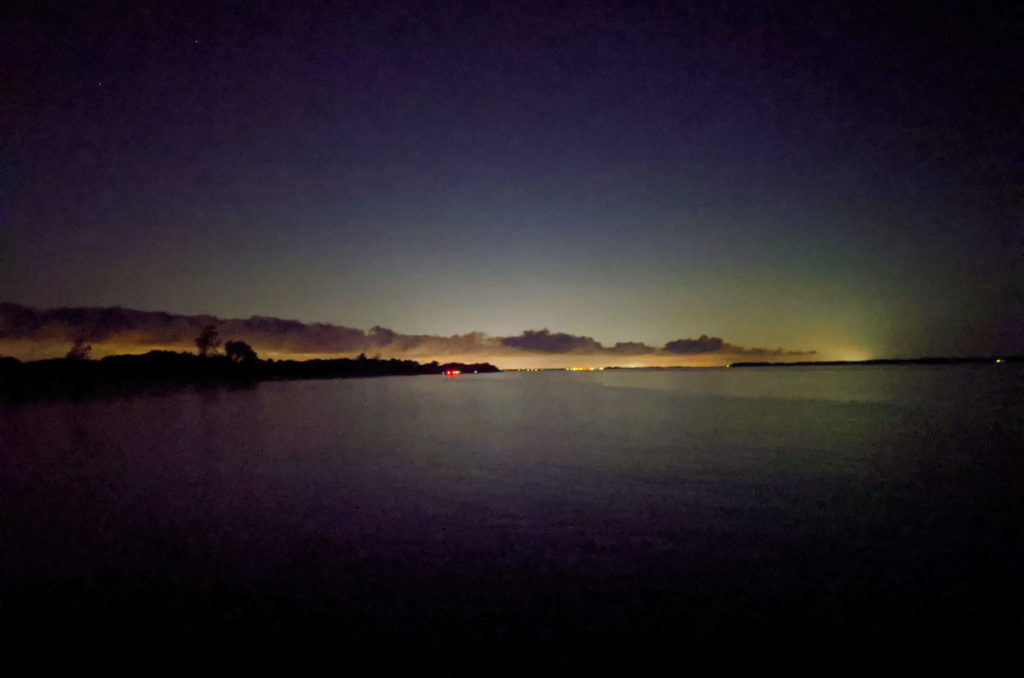
The best part about staying up all night is that you get to see the pre-dawn sky behind the lighthouse.
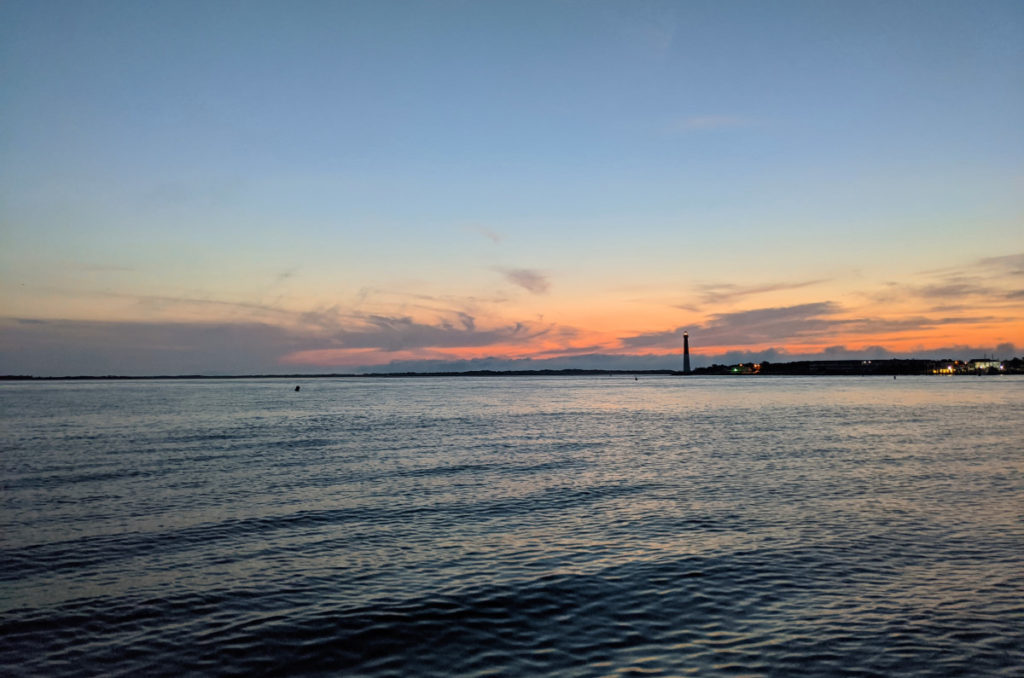
I probably slept more after the sun had come up than when it was dark, but before too long, we got up and made coffee and breakfast. I turned on the VHF, just to hear if anyone was saying anything. There was immediate chatter, with someone asking the Coasties about the visibility in the inlet. I was shocked when they replied “150 yards.” We were only maybe a thousand yards from the inlet, and it was clear and sunny where we were. I jumped up on deck and saw that a weird fog had formed around the island. It wasn’t around us, and I couldn’t really see it well in the inlet from our vantage, but I could see it back by Viking Village, obscuring the commercial fleet.
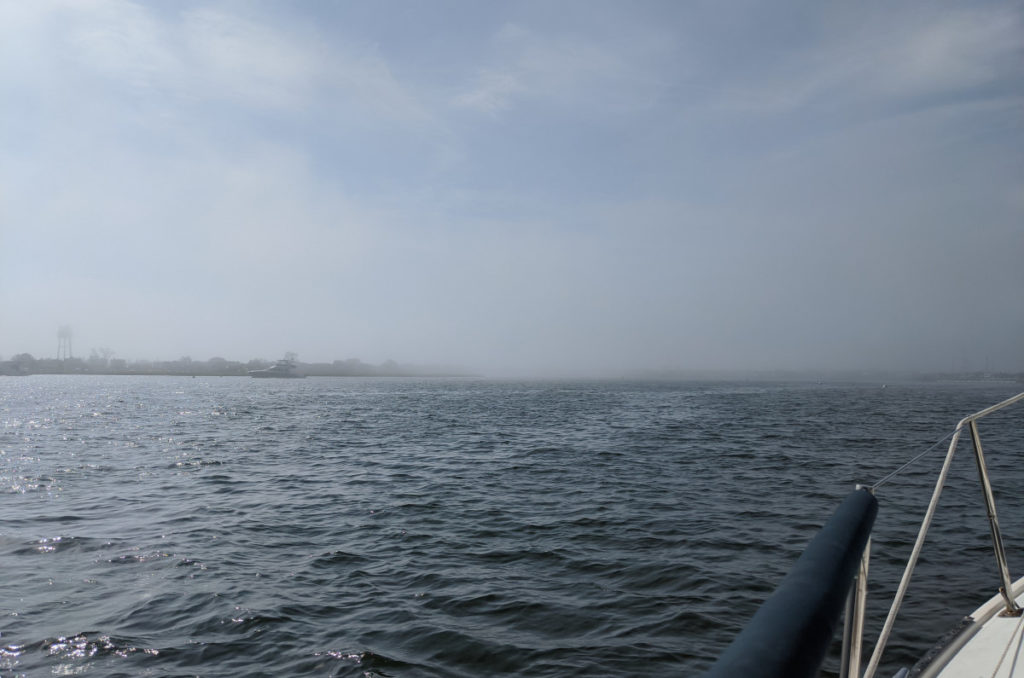
Fog is among my least favorite weather conditions for sailing. It’s also fairly unusual around here, especially in the summer. I’d certainly never seen it so localized. I kept an eye on it as we prepared the boat to sail home. While it would occasionally appear to start moving toward us, it always receded back to the island and never actually made it out to where we were.
By the time we were ready to depart, the wind was out of the south at about 10kts. I visualized the route in my head and was pretty sure that with that wind, we could sail home without starting the engine. I pitched the idea to Jenn, and we agreed that we would give it a try. It’s a little hard to predict exactly what will happen…once the anchor is pulled, the boat’s not going to just sit there head-to-wind, and we would have limited control until we could get up some speed, but we had plenty of room to roll with whatever it wanted to throw at us. I raised the main and went forward.
The anchor was well-secured to the muck, and I initially had a little trouble getting it unstuck. I pulled the rode until it was near vertical and let the wave action work on it a bit, and then was able to retrieve it. Without the anchor the boat started to drift, but as soon as the sail bit on the wind we picked up speed. Jenn jibed us and began sailing along the dike toward the channel. I dangled the anchor in the water, allowing the forward motion of the boat to clean some of the mud off of it, then came back to the cockpit and unfurled the jib.
The channel was far busier than it had been on the day before, but it’s always easier going back when the twists and turns are fresh in your memory. The current was also flowing with us, so we got a slight boost going out just as we did coming in. I did stray from the channel slightly at one point, but we didn’t touch and I was able to get back to it without drama as soon as I spotted the buoys that I’d missed. Running the channel under sail alone was fairly technical, with a lot of jibes and trimming adjustments to keep us moving, but that’s the good stuff. Once we got back to BI, we turned and sailed a fast beam reach back to Cedar Creek.
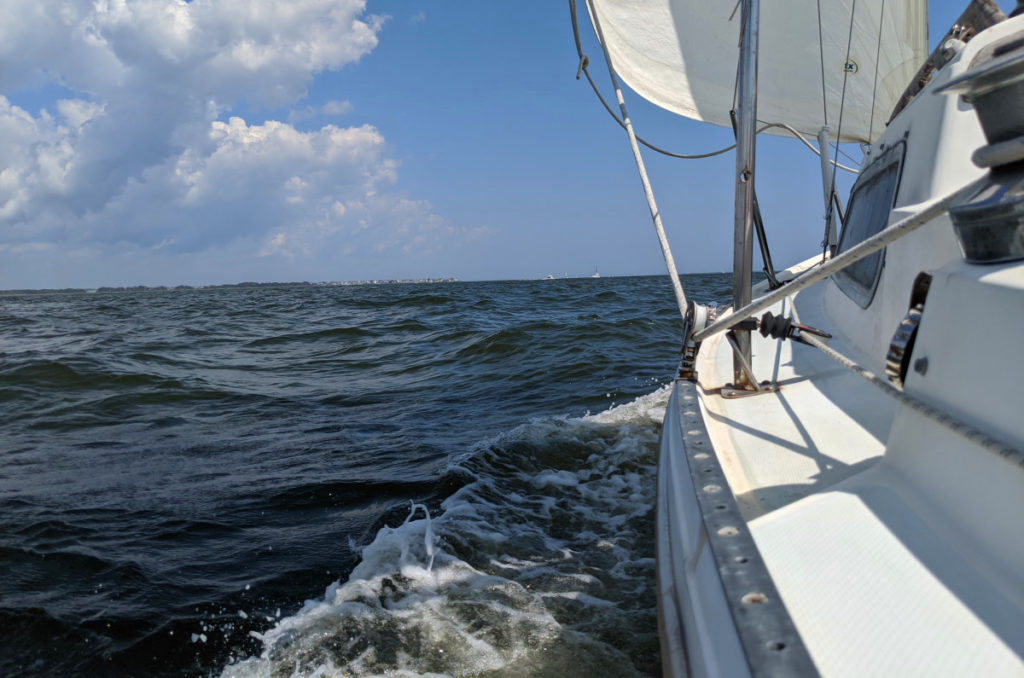
Despite my litany of cautions and warnings to Jenn prior to the Myers Hole Redux, we did not need to call upon Fortuna Redux for help. The weekend was very close to perfect. I almost feel bad that we didn’t start with an overnight in a crappier location so that Jenn could properly appreciate how good this trip was. The weather, the empty anchorage, catching the tide right in both directions…it doesn’t really get much better around here. She didn’t even have any trouble controlling the boat during our anchoring operations. We’ll save the petition to Fortuna when I eventually battle the leviathan spawn in my water tank.
More photos are in the gallery here.
